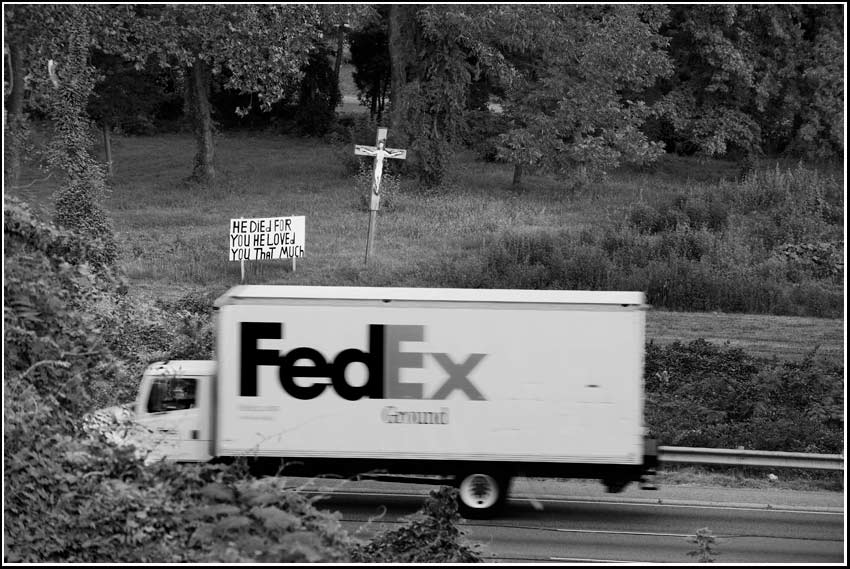
Month: August 2011
summer reading
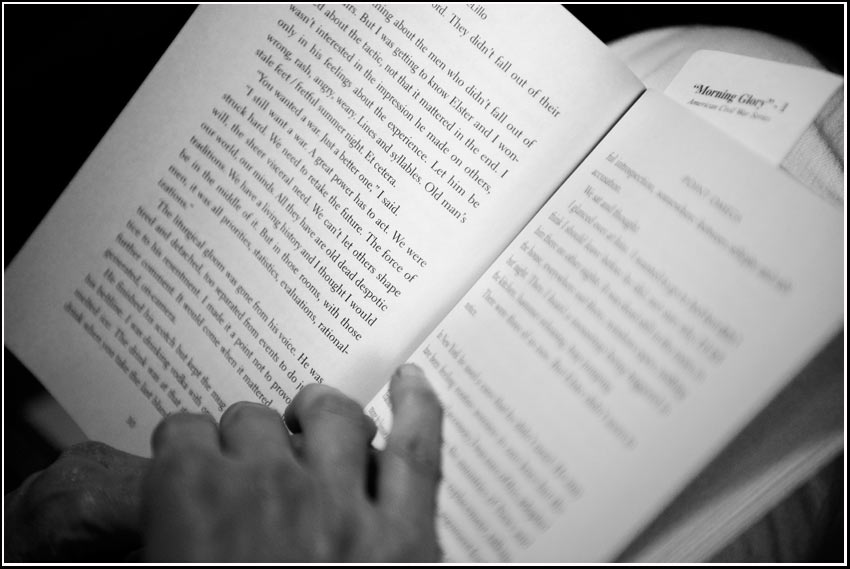
In the middle of a desert “somewhere south of nowhere,” to a forlorn house made of metal and clapboard, a secret war advisor has gone in search of space and time.–Wikipedia
Has Don ever written a user friendly novel?
empty chairs

conference room
day of rest
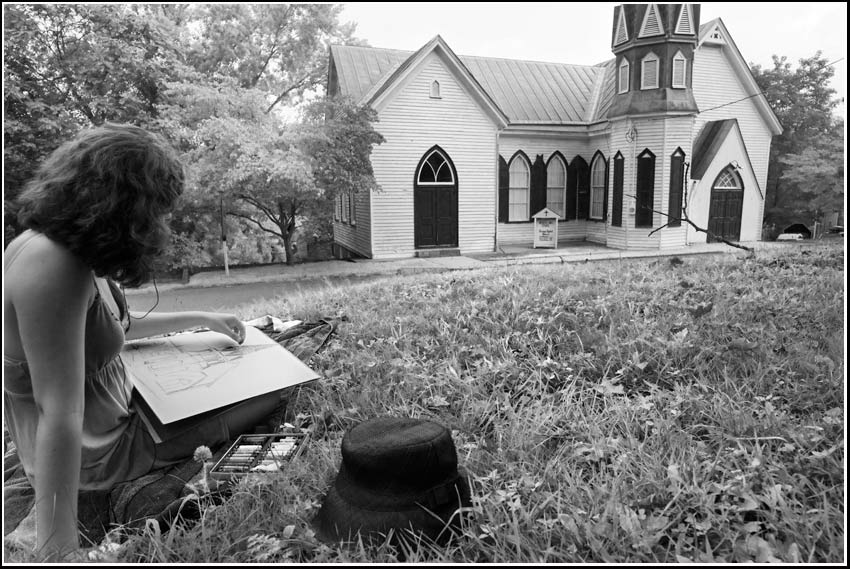
Woolen Mills Chapel, Charlottesville, VA
Irene

Lighter than air craft headed for calmer skies, bearing west. This was August 26, above the Mattaponi Bridge on Rt. 360, near Aylett, VA.
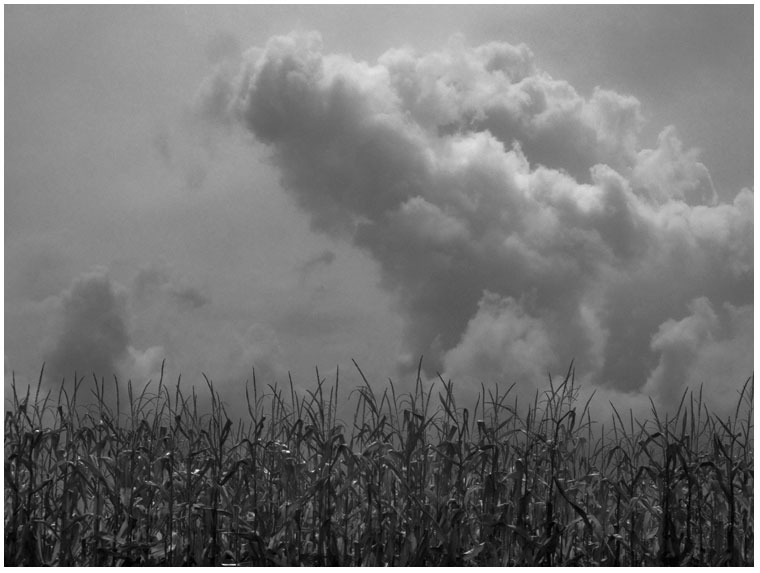
Friday was a sultry day, high humidity. I didn’t irrigate the trees, the weather forecast claims that won’t be necessary.
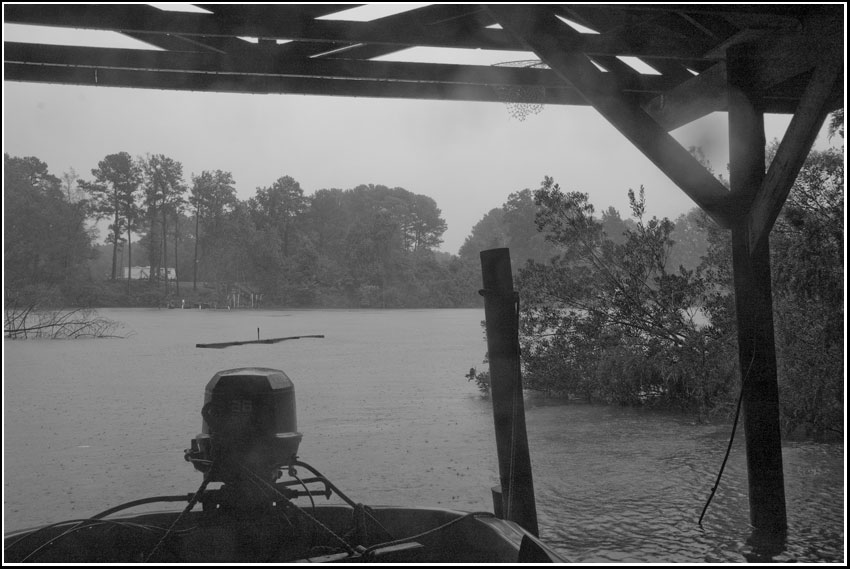
Irene’s rainy self arrived around dawn on Town Creek. At high tide (1000hrs), this boat which usually hangs four feet above the water was floating. Everything is getting power-washed. Steady winds from the northeast. Reminds me of Solaris and Water World. Hoping that Irene will stay good tempered.
sunglasses
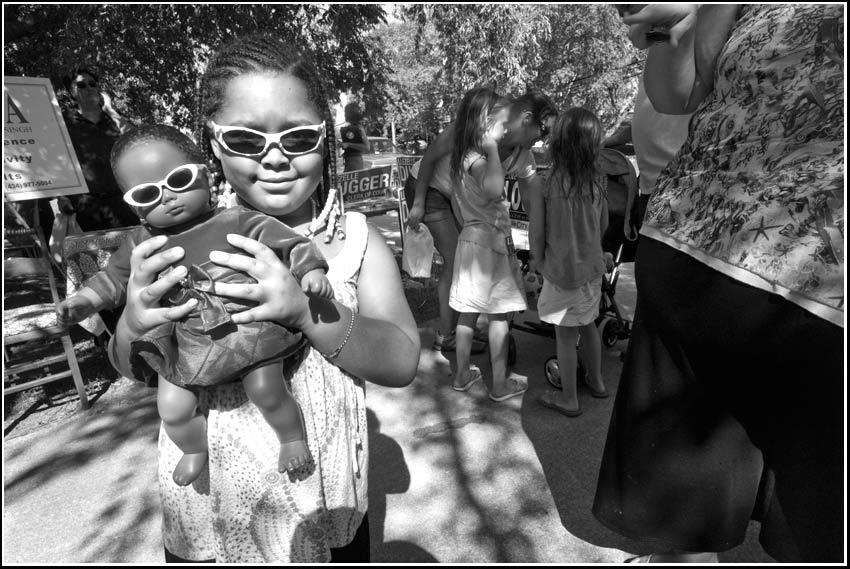
Questions to the USGS
I was seated outside on a concrete slab during the seismic event Tuesday. I live in Charlottesville, VA. ( 38.023873°, -78.461908°)
I am disappointed in my lack of ability to recount accurately three things.
1- How long the event lasted
2- How much movement was there of the surface. If I had a “fixed point” a foot in the air above my concrete slab, did the earth move up and down two inches relative to my fixed point? Back and forth two inches? At what frequency?
3- The noise. How much noise did the SE make? Would it have been as noisy if I’d been out in an open field? Away from structures.
Answers from the USGS
1. Your first inquiry is about earthquake duration of the Virginia earthquake of August 23, 2011. The short answer to your question is that the duration of the earthquake was about 2 seconds. However, allow me to provide a little description of what (our) meaning of duration is.
Duration can be technically defined as the time from the onset of an earthquake (the nucleation) to the cessation of shaking (when the moving fault finally runs out of steam). This is called “source duration” and has a unique value. However, the time over which observers close to the earthquake will feel the shaking of an earthquake can vary considerably depending on one’s distance and azimuth from the epicenter. Reasons include: (1) directivity; (2) partition of energy (between P, S and surface waves); and (3) local geology. Earthquake directivity, analogous to the Doppler effect in acoustics and optics, is the variation in duration due to one’s position relative to the direction of rupture . Complex rupturing, which is not uncommon for very large earthquakes, can intensify variations due to directivity. This probably was not a strong factor for the Virginia earthquake. Also, P and S waves, as well as surface waves, travel with different velocities within the earth and carry different amounts of energy at different azimuths. Observers may feel one or all of these waves with varying intensity and at different time intervals. Finally, the time over which a seismic wave can be felt can be extended if the observer is situated over certain geologic structures, such as a sedimentary basement, which can trap energy and keep it reverberating for a while. So the short answer is that you probably felt the earthquake for two long seconds. However, depending on the geology of location and your distance from the epicenter, you might have felt shaking for many more seconds.
2. I have seen one seismogram at a station located 200 kms from the epicenter showing a peak displacement of 2500 microns. That converts to 2.5 mm. or about 0.1 in. If you are closer the amplitude may be larger. Note that this displacement is not the permanent rupture at the fault; it is elastic response (shaking) of the earth.
3. Earthquake sounds have rarely been reported. It is feasible that an earthquake can be heard. The range of human hearing is approximately from 20-20,000 Hz. The peak energy (corner frequency) of earthquakes large enough to be felt ranges from roughly 0.10-10 Hz. So there could be an overlap. Although reports of earthquake noise are not common, we do get them. They are usually described as a “low rumbling”, which is consistent with the overlap range of frequencies I just mentioned. Higher frequency sounds you may have heard could have been indirect effects of shaking on structures or items within your house.
my people/se082311a
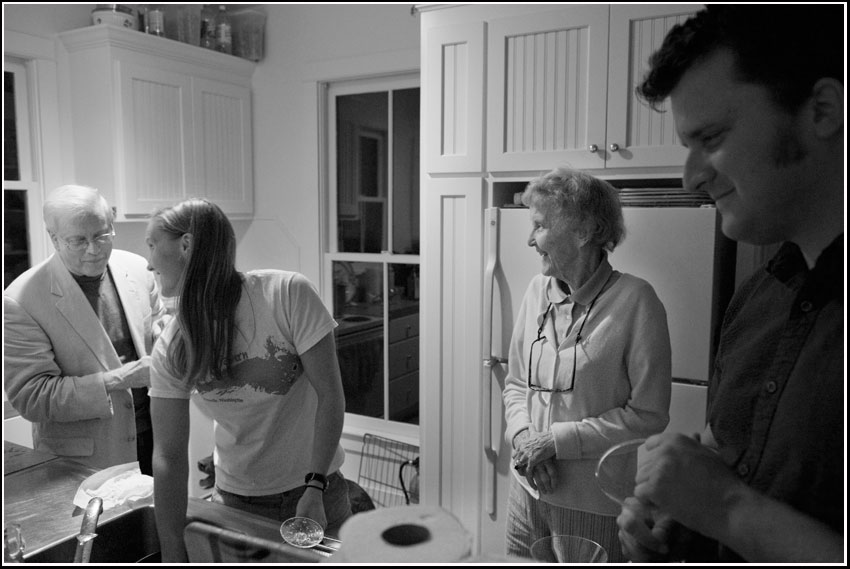
I was sitting on an 8×10′ concrete slab during the seismic event yesterday. The concrete was moving, unsettling to have the frame of reference dance. The epicenter 29.5 miles from here. But happily, there were no injuries locally. Yellow jackets caused more pain than did the largest Virginia earthquake in a century. We are fortunate.
Good fortune is always temporary.
temporary infrastructure
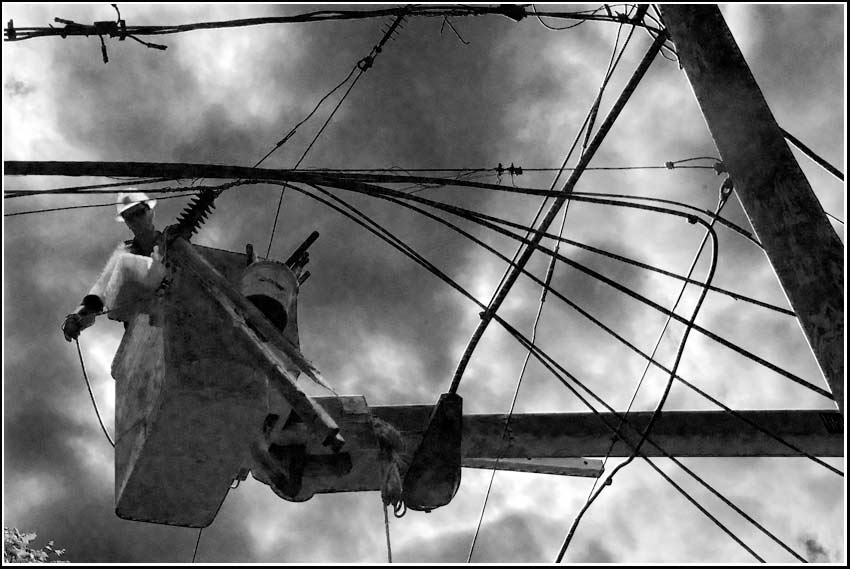
Lineman from Davis H Elliot Electrical Contractors works to untangle a 20,000 volt distribution line on Park Street.
We had a thunderstorm in Charlottesville Sunday. Some trees dropped limbs, others snapped.
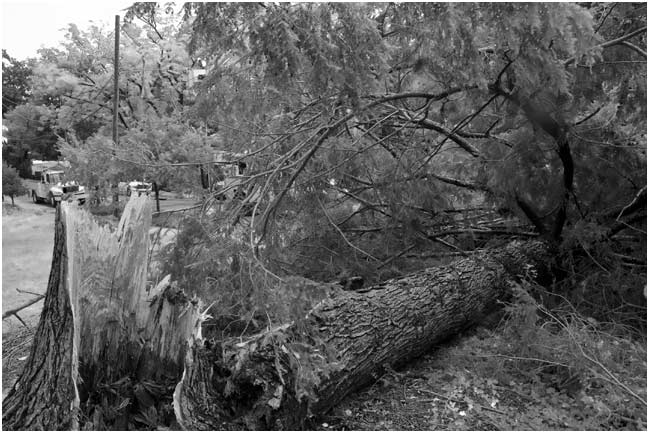
Invariably, after storm events there are calls for sapletting…
Lets go axe some trees, they made me miss America’s Funniest Home Videos
How do they do it in the big leagues? Like New York City? Where are their wires?
In Charlottesville, I’d be surprised if we spent more than a hundred thousand dollars last year putting this infrastructure underground, less than we’d spend sending a half dozen children to school.
(below- quercus alba v. Buick, Park Street north of its intersection with Cutler Lane.)
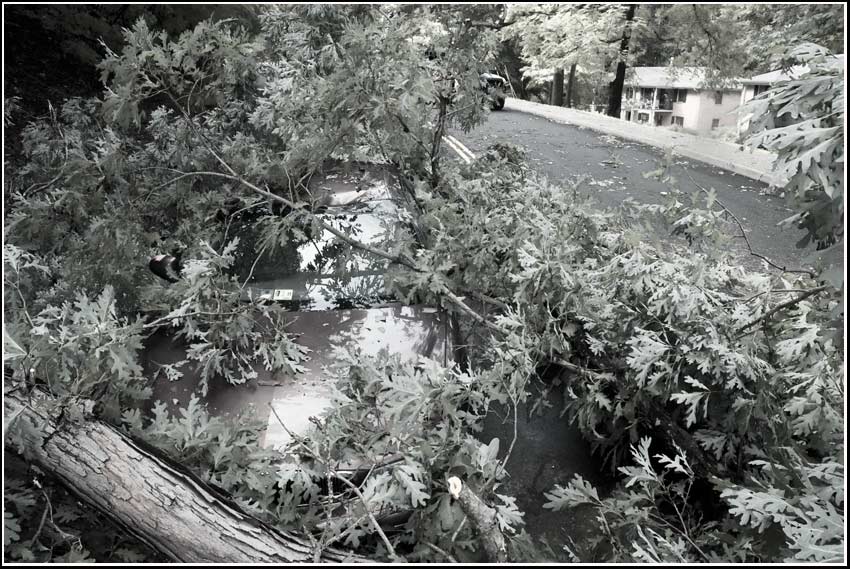
May 3, 1990, the Charlottesville City Council and the Planning Commission met and discussed undergrounding electric wires, a lengthy excerpt from the minutes follows.
The undergrounding of utilities was discussed.
Ms. Waters stated that Council’s position was to underground utilities where possible but did not support a major undergrounding effort because of the high cost.
Mr. Akin stated that at his request students in the Systems Engineering Department at the University will conduct a complete study on the management of utilities, including undergrounding and the potential for City ownership. Mr. Akin stated that his intent was to determine how the City can more effectively have control over the utilities.
Mr. Sours noted concern with possible bias of the study and recommended that the study be coordinated through the City Manager’s office.
Ms. Waters stated that there had been no collective decision on the part of the Planning Commission or Council to study utilities and expressed concern about devoting staff time to a study commissioned by one individual.
Mr. Toscano stated that he thought it was positive that the University was willing to take the study on.
Rev. Edwards stated that he would be interested in seeing what the study showed.
Ms. Kay Slaughter, Council Member elect, questioned whether the City had a policy about undergrounding for new projects and Mr Gary O’Connell, City Manager replied that undergrounding has been required for new construction.
Ms. Sue Lewis, Planning Commission member, stated that she felt the City should use the students at the University as resources more often.
Mr. O’Connell stated that he and the City Attorney have been working with Virginia Power on the undergrounding issue.
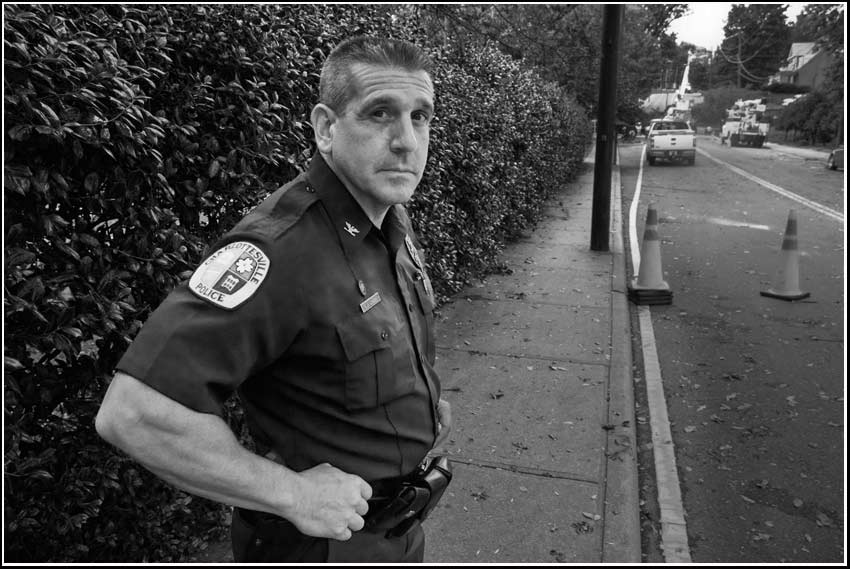
Park Street was closed north and south of the Route 250 bypass Monday morning.
day of rest
metapolitics

Metapolitics (sometimes written meta-politics) is metalinguistic talk about the analytic, synthetic, and normative language of political inquiry and politics itself. Put simply, it is dialogue about the way we talk about politics… In current usage and praxis, the term metapolitics is often used in relation to postmodern theories of the Subject and their relation to political theory. In its broadest definition, metapolitics is a discipline that studies the relationship between the State and the Individual.–Wikipedia
Charlottesville Tomorrow has posted audio for this fascinating moment, left to right councilmanic candidates Scott Bandy, Paul Beyer, Colette Blount, three of the eleven declared candidates.
